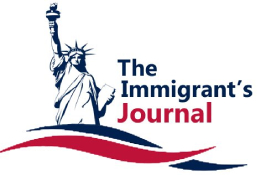By: Chris Tobias
New York City stands at a precarious economic crossroads, contending with stubborn inflation, uneven wage growth, and the first signs of job losses since the pandemic’s recovery period. While national inflation has cooled, the city’s cost of living continues to climb—driven in part by lingering effects of Trump-era tariff policies that disrupted supply chains and pushed prices higher. Against this backdrop, Mayor Eric Adams has advanced a sweeping economic strategy centered on affordability, equitable job growth, and fiscal resilience. This article examines the forces shaping NYC’s current challenges and how Adams’s initiatives—from targeted tax relief to green job creation—aim to steady the city’s economy in an era of uncertainty.
- Inflation and the Employment Picture in NYC
New York City faces mounting economic pressures as inflation persists and employment vulnerabilities loom. While inflation has broadly moderated, its effects endure in high-cost urban centers like NYC. In mid-2024, the city registered a 4.2% increase in consumer prices, eclipsing national averages and intensifying financial strain on residents.
At the same time, wage gains have been uneven. Though some sectors like healthcare, transportation, and warehousing have seen real wage growth, many low-earning workers face stagnation or decline in purchasing power.
On the employment front, despite a post-pandemic rebound to all-time highs in private-sector jobs, early 2025 brought signs of fragility. For the first time since the pandemic struck, NYC saw job losses in the first five months of the year, a shock analysts directly linked to tariffs and other Trump-era economic policies .
- The Trump Policy Connection: Inflation, Tariffs, and Job Losses
Much of the city’s economic turbulence traces back to policies enacted at the federal level. President Trump’s aggressive imposition of tariffs disrupted global supply chains, raising input costs for businesses and contributing to inflation—particularly in goods-sensitive regions like NYC.
With manufacturing and trade sectors disrupted, secondary ripple effects dampened local consumer confidence and hiring. The resulting rise in prices—especially for essentials—strained household budgets, while businesses grew more cautious with hiring and investment.
- Eric Adams’s Economic Strategy: A Multi-Pronged Response
Mayor Eric Adams has framed his approach to these challenges around “affordability, opportunity, and resilience.” His strategy includes several key pillars:
a. Building Jobs and Equitable Growth
- Through the “Run This Town” and Jobs NYC initiatives, Adams has prioritized employment equity—evidenced by a 25% reduction in Black unemployment since 2022.
- His administration is also cultivating the green economy, aiming to train New Yorkers for 400,000 potential ‘green-collar’ jobs by 2040.
b. Revitalizing the Economy
- Under “Jobs Week”, Adams launched the “Race for Space” plan, targeting job creation by activating vacant office buildings and attracting new businesses.
c. Fiscal Prudence Amid Inflation
- Facing looming recessionary risks, Adams instructed city agencies to cut spending by 3% over inflation, aiming to preserve fiscal health while managing services.
- In early 2025, Adams unveiled the “Best Budget Ever”—a historic $115–116 billion budget featuring significant investments in childcare, education, libraries, and immigrant services while maintaining notable reserve funds.
d. Direct Economic Relief
- Adams proposed the “Axe the Tax” program, which seeks to eliminate city income tax for low-income residents, delivering average savings of $350 per household annually.
- Evaluation: Strengths and Limitations
Strengths
- Targeted Support: Adams’s budget includes focused relief for low-income households and job training for growth sectors.
- Employment Gains: Initiatives like Jobs NYC have correlated with substantial drops in historical unemployment inequities.
- Budget Scale: The record-setting budget demonstrates capacity for bold public investment, even in uncertain times.
Challenges
- Tariff-Induced Drag: Structural inflation driven by external tariff policy remains beyond city policy control.
- Sustainability of Relief Measures: Tax relief and spending increases, while helpful, may strain long-term fiscal balances without offsetting revenue sources.
- Economic Unpredictability: If job losses continue, the cost of maintaining programs and staffing may rise, requiring adaptability.
- Conclusion: Balancing Relief, Resilience, and Readiness
New York City grapples with inflation pressures and early signs of job market softening—the fallout of federal economic volatility rooted in Trump-era tariffs and protectionist policy.
Mayor Eric Adams’s response has been aggressive and comprehensive, combining equitable job programs, fiscal restraint, and affordability measures. His strategies—while promising—must navigate fiscal constraints amid an unpredictable economic environment.
The key will be adaptability: ensuring short-term relief does not undermine fiscal resilience, while green jobs and local investment help drive long-term stability. Adams’s leadership during this period underscores the challenge and possibility of municipal governance in the face of federal-induced economic shockwaves.

